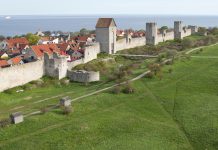This post may contain affiliate links. We may earn money or products from the highlighted keywords or companies or banners mentioned in this post.

A recent report by the Nicaraguan Central Bank revealed the indicators of inbound and outbound tourism in Nicaragua last year. The figures show that the length of stay increased while spending of visitors went down.
In the case of inbound tourism in Nicaragua the report indicates that in 2015 the average stay in the country was 8.7 days, i.e. 14.5% longer than in 2014. This increase is based on the growth in average stay by tourists from Europe (28.2% higher than 2014), and by tourists from other regions, with an increase of 25.5%.
The average daily spending per capita by visitors to Nicaragua in 2015 was $41.5, which is 0.7% lower than the previous year. The reason for this decline was an 11.8% drop in spending by visitors from Central America. This was offset, however, by the spending by visitors from other regions, which increased by 17.5% over the previous year.
Average daily spending per capita was higher for visitors who came on business ($66.8), followed by those who visited Nicaragua on vacation ($50). Those entering the country to visit relatives and friends were the ones who spent the least ($23.3 a day).
Meanwhile, outbound tourism in Nicaragua saw the average spending per capita of $20.6 in 2015, mainly due to visits by local residents to destinations in South America and other regions. This represents a 13.4% decline compared to figures for 2014, mainly due to the 30.6% fall off in spending by those who travelled abroad for other reasons.
Residents who travelled on business were the ones spending the most, with a daily average of $62.1, while those visiting family and friends were at the bottom of the list with an average daily spending of only $11.5.
In the case of average stay in 2015, outbound tourism registered 16.9 days, i.e. a 0.6% increase over the previous year. The cause of this development was a 12.7% longer stay by residents who travelled to other regions.










